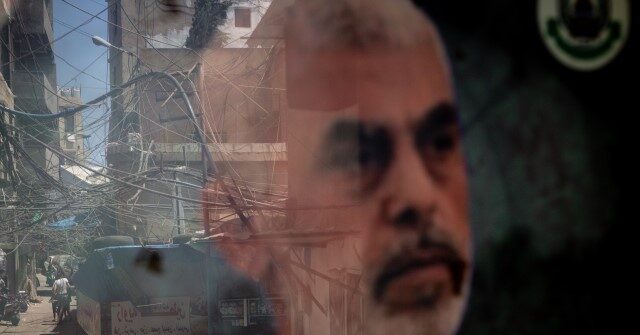On October 7, a significant shift in the Israeli-Palestinian conflict occurred with the death of Hamas leader Yahya Sinwar in Rafah, Gaza. Sinwar’s demise was not the result of a targeted airstrike, which had been the preferred method of the Israeli military under pressure from U.S. leadership, including President Joe Biden and Vice President Kamala Harris. Instead, Israeli ground forces, leveraging intelligence suggesting high-ranking Hamas leaders were present in the southern Gaza Strip, executed a live operation that led to Sinwar’s elimination. This surprising turn of events highlighted the tension between ground operations and airstrikes in modern military engagements, particularly in densely populated areas such as Rafah.
Sinwar was struck down by an Israeli tank shell during an engagement wherein troops encountered combatants from Hamas. The soldiers were taken aback to discover they had killed the top-ranking Hamas official along with several of his officers. This incident underscores the complexities and unpredictability of military operations in urban warfare, where the lines between civilian and combatant are often blurred. While airstrikes have recently been effective, as demonstrated by the elimination of Hezbollah leader Hassan Nasrallah, they are not infallible and carry significant risks of collateral damage—leading to heavy civilian casualties that the Israeli Defense Forces (IDF) have faced criticism over consistently.
The initial reluctance from the Biden administration to support a ground invasion in Rafah stemmed from concerns over civilian casualties; they advocated for more measured approaches like precision airstrikes. Despite these tactics, the IDF’s operational realities revealed the significant limitations of airstrikes in targeting elusive figures like Sinwar, who had managed to evade capture amidst the chaos in Gaza through a sophisticated tunnel network. Ground forces are imperative for meaningful engagement and often represent the only way to seize opportunities as they present themselves in conflict zones.
Sinwar’s identification through DNA testing shortly after his death also brings to light the importance of ground troops in successfully confirming the death of key targets. Historically, terrorist organizations have claimed their leaders remain alive following targeted strikes to maintain morale. The immediate announcement of Sinwar’s death bolstered Israeli morale significantly and was intended to demoralize remaining Hamas fighters. Should Sinwar’s escape plan across the Egyptian border have succeeded, it would have further complicated the narrative surrounding Hamas leadership’s accountability, but ground forces’ timely intervention thwarted this.
With ground troops’ advancement into Gaza, the IDF was able to take control of crucial infrastructure, including the Egyptian border crossing and key roadways. This strategic move not only assisted in intelligence gathering but also set the stage for future negotiations regarding ceasefire agreements, as controlling these routes is pivotal for military and political leverage. The presence of Israeli forces on the ground means they can dictate future engagements and potential ceasefire terms, further entrenching their position in the conflict.
Finally, the operations in Rafah uncovered vital evidence of Hamas’s military capabilities, including tunnels, missile launch sites, and weapon caches, all hidden within civilian zones. The IDF’s ongoing mission has reportedly led to the deaths of numerous Hamas militants and the dismantling of their infrastructure. The assault on Rafah has thus functioned as more than just a military engagement; it has been a strategic maneuver aimed at dismantling Hamas’s operational capabilities and reclaiming control over a territory that has been a focal point of conflict. The implications of these actions are significant, as they may reshape the battlefield dynamics in Gaza and influence future negotiations related to peace and security in the region.

